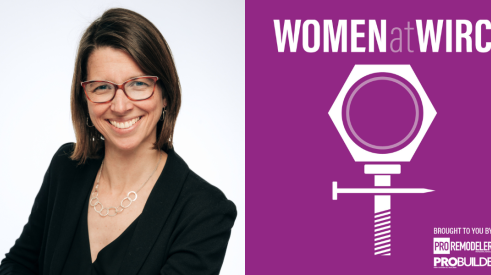In an ever-changing business environment, it is helpful to see and learn from what others are doing to improve their business or the experience they are delivering to their clients and employees. I wanted to share with you five books I recently read that you might enjoy.
“Enchantment” by Guy Kawasaki
Kawasaki defines enchantment as the process of delighting people with a product, service, organization, or idea. One must understand what people are thinking, feeling, and believing in order to enchant them. Kawasaki recommends a “pre-mortem” to prevent potential problems in order to increase the likelihood of success with a product or service. Enchantment is a process, not an event. The goal of enchantment is long-lasting change; what happens when you change hearts, minds, and actions. Enchant your employees.
“The Checklist Manifesto” by Atul Gawande
Gawande explains we have just two reasons that we may fail. “Ignorance, we may err because science has given us only a partial understanding of the world and how it works. The other reason is ineptitude. In these instances the knowledge exists, yet we fail to apply it correctly,” says Gawande. Checklists save lives, and can improve your business. Gawande provides story after story with evidence to back it up. He shares stories on everything from building skyscrapers to improving health around the world.
“Checklists establish a higher standard of baseline performance. We rarely investigate our failures. A single type of error could affect thousands, but because it usually touches only one person at a time, we do not search that hard for explanations,” Gawande says.
“The Power of Habit” by Charles Duhigg
Almost all the patterns that exist in most people’s lives: how we eat, sleep, talk to our kids, how we unthinkingly spend our time, attention, and money—those are habits that exist. Once you understand the habits can change, you have the freedom, and the responsibility to remake them. Once you understand that habits can be rebuilt, the power of habit becomes easier to grasp, and the only option left is to get to work. Duhigg identifies how the habit loop starts with a cue, a trigger, and then there is a routine, which can be mental or emotional, and finally a reward.
Over time this loop, cue, routine, reward becomes more and more automatic. Habits can be ignored, changed, or replaced.
“Once you break your habit into its components, you can fiddle with the gears,” Duhigg says.
This is not just for our individual lives, it’s also for companies, organizations, and communities. Duhigg explains there are no organizations without institutional habits there are only places where they are deliberately designed, and places where they are created without forethought.
“To Sell is Human” by Daniel Pink
Even if your title doesn’t include sales Pink says, “We are devoting upward of 40 percent of our time at our job to moving others: persuading, influencing, and convincing others. We are moving others to part with their resources; whether something tangible like cash or intangible like effort or attention.”
In this book Pink covers many of the ABC’s of selling. Pink provides many perspectives on questions, your perspectives, emotions, clarity, and what to do.
“Sales and non-sales selling are about service. Improving others’ lives, improving the world. Make it personal. Make it purposeful, ” Pink says.
“Contagious” by Jonah Berger
Why do some products, ideas, and behaviors succeed when others fail? In his research, Berger found the same six “ingredients” which he calls the “Six key STEPPS” that cause things to be talked about, shared, and imitated. People don’t need to be paid to be motivated; social incentives, like social currency are more effective in the long term. Berger describes social currency, as “people want to look smart rather than dumb, rich rather than poor, and cool rather than geeky.” Berger also breaks down the pieces and parts of what has been successful. He goes into detail on: finding inner remarkability, leveraging game mechanics, making people feel like insiders, triggers, and emotion.
“People don’t want to feel like they are being told something; they want to be entertained, they want to be moved,” says Berger.
It is helpful to see and learn from what others are doing to improve their business or the experience they are delivering to their clients and employees.
Add new comment
Related Stories
Forty Under 40 Remodeling Trendsetters
The new ideas embraced by our Forty Under 40 winners are examples of forward-thinking leadership in remodeling
How to Create a World-Class Remodeling Team
Great remodeling companies position themselves for the future with the right players
Get the Most Out of Your Teams with This Leadership Style
The transformational leadership style focuses on inspiring and motivating team members to achieve their full potential and exceed their expectations
How to Revamp Your Pre-Construction Process
Experiencing too much slippage and delays? See how Bridget Bacon of Red House Design Build solved these issues by improving the remodeler's pre-construction process
Building A Small Projects Division from the Ground Up
Through hard work and careful strategy, Harth Home Services has seen big growth
A Mindset of Serving Others
A research study shows surprising results about what makes us take ownership of our work.
3 Keys to Successful Team Management
On this episode of Women at WIRC, hear Laura Burnes delve into her approach to leadership and project management, in addition to sharing insights into Adams + Beasley Associates' winning culture.
4 Steps to Prep Your Business for Contraction
How a remodeling company plans ahead for the worst of times (and the best of times)
Helping Remodelers 'Get Their House In Order'
From remodeler to NARI executive to industry consultant, Diane Welhouse uses her expertise to help business owners













